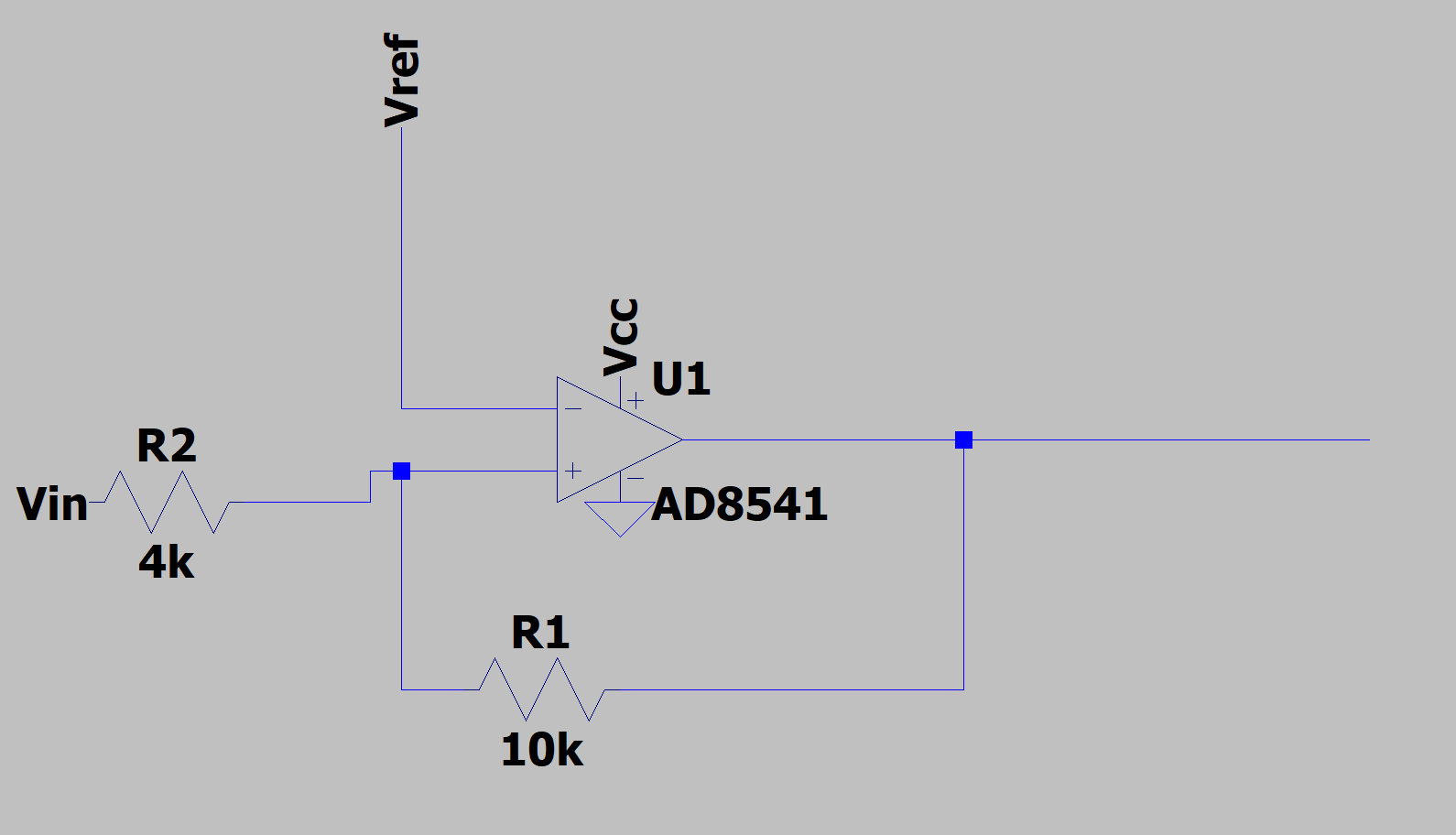Vcc=5 V, Vin= a noisy input voltage.
I'm designing a non-inverting Schmitt trigger using a voltage divider. As shown from the image, I designed it using LTpice and I got the desired results.
From the waveform, however, I'm only seeing one threshold which is my reference voltage at 2.143 V. I thought a Schmitt trigger had two threshold voltages? Is there something wrong with this circuit?
I'm having trouble analyzing this waveform. Vref is the threshold; how come I don't see a high threshold and a low threshold?





